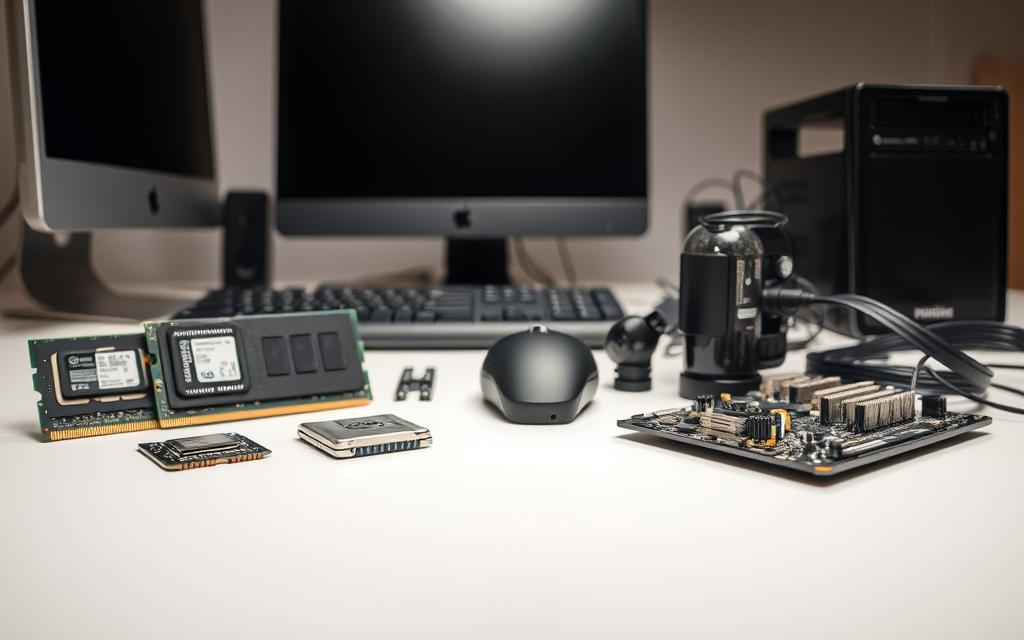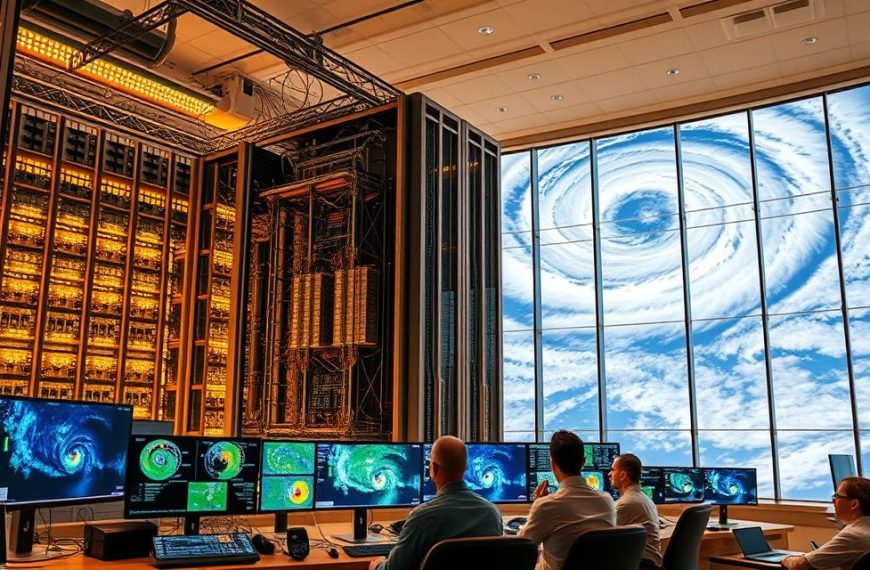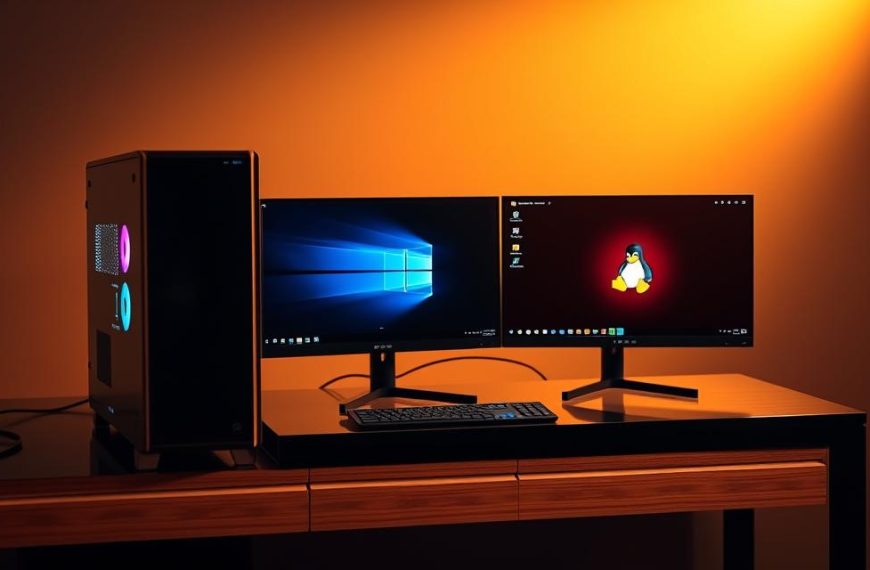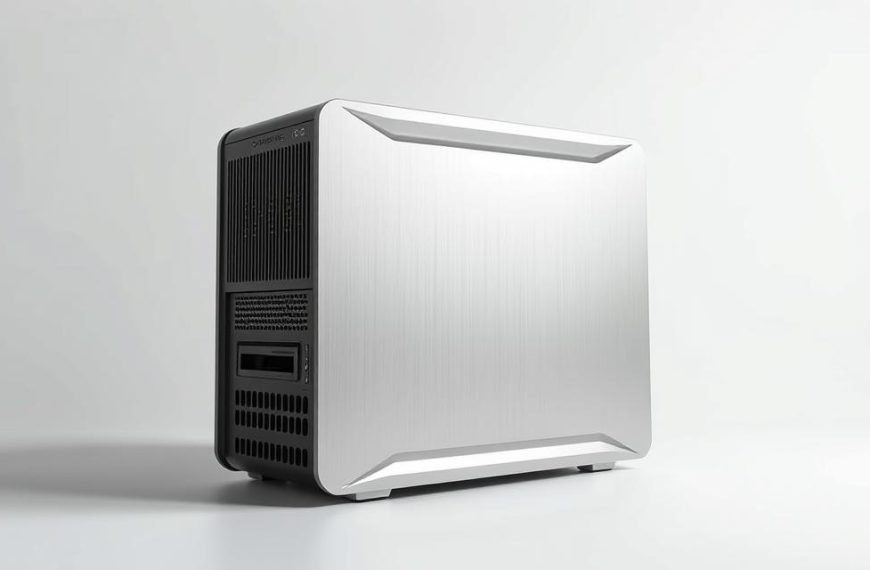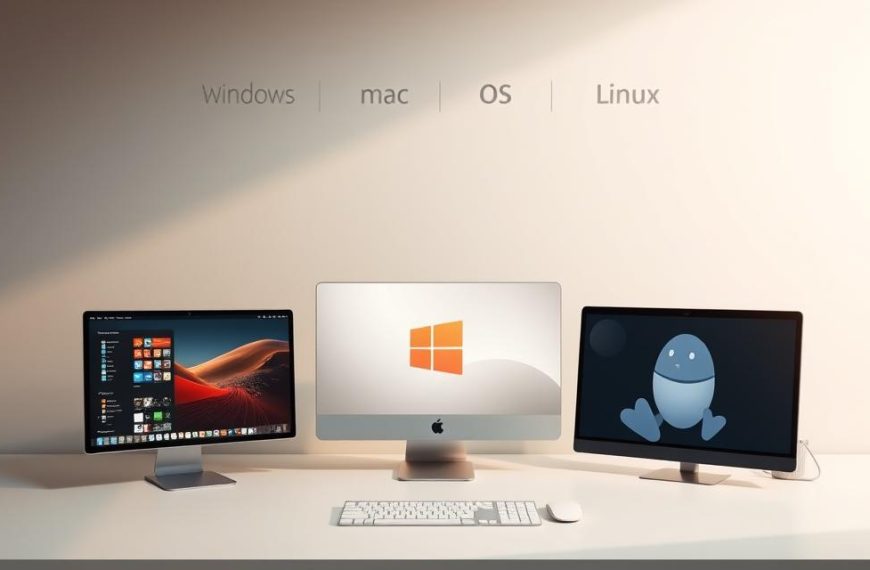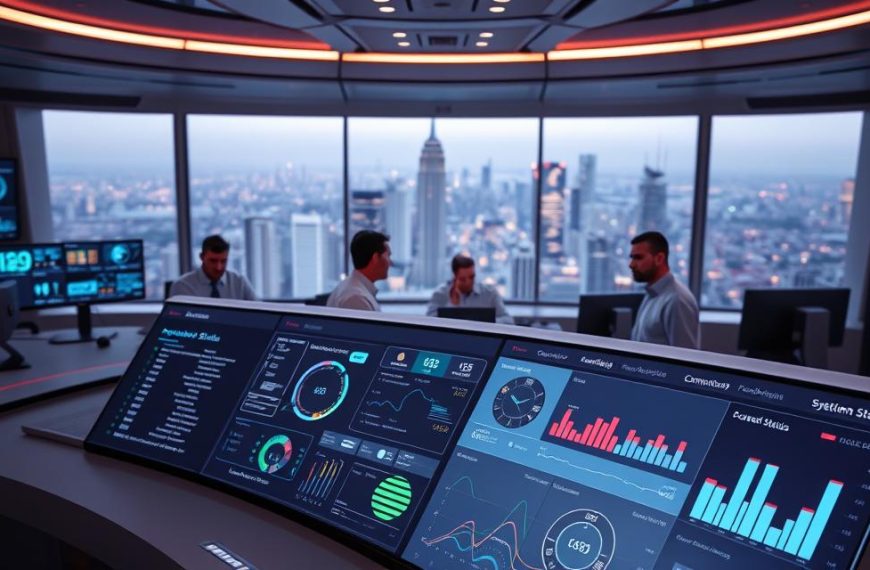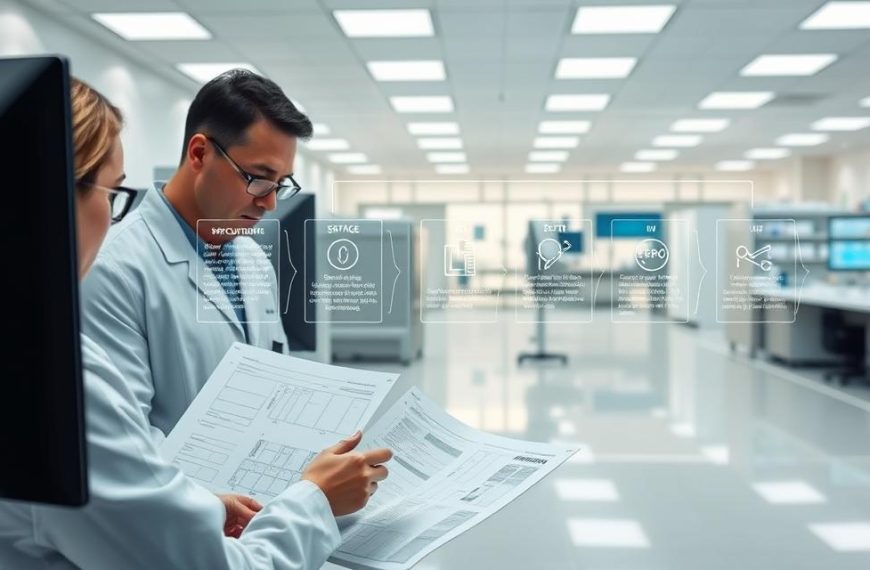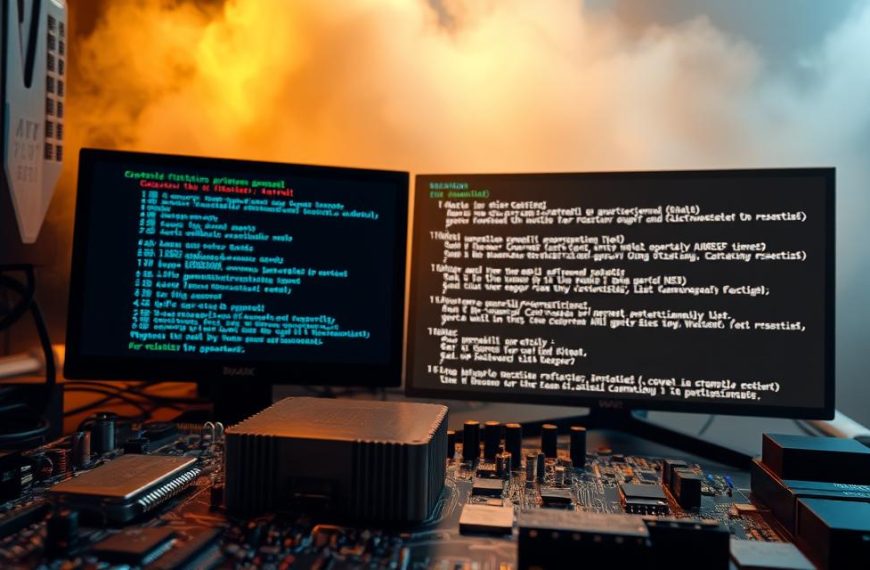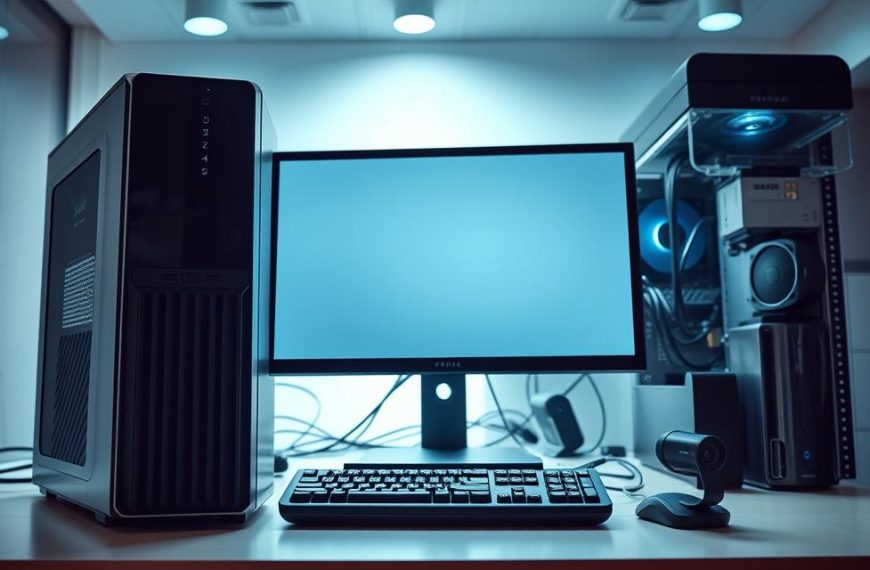Every computing device needs two key elements. The physical components you can see and touch are one half of this duo.
The tangible computer elements include parts like the processor and memory chips. These are found inside the computer. External devices like monitors and keyboards also belong to this group.
This mix of electronic and mechanical parts makes up the computer hardware. Unlike software, these parts are the base of all digital work.
Knowing about these parts helps you understand how your computer works. It shows how solid components and flexible instructions come together to give us today’s computing.
Defining What Hardware Is in a Computer System
Computer hardware is the physical base of any computing device. It includes parts that work together to process information and deliver digital experiences we use every day.
https://www.youtube.com/watch?v=4XwEsI_OYOM
The Role of Hardware in Computing
The main hardware function is to turn electrical signals into useful work. Each part has a special role in the system’s design.
Processing units do calculations and logical tasks. Memory holds data temporarily for fast access. Storage devices keep information for a long time. Input/output devices help users interact with the system.
This teamwork shows how important computing components are in running software. Without strong hardware, even the best software can’t work well.
Distinguishing Hardware from Software
The key hardware vs software difference is their physical nature. Hardware includes parts you can touch, like the computer’s body.
Software, on the other hand, is the intangible programs and systems that give instructions. It tells the hardware what to do and how to do it.
This is like a symphony orchestra, where hardware is the instruments and software is the score. Both must work together for the best results, as explained in this detailed hardware resource.
Hardware sets the system’s speed and capacity. Software decides how to use those resources. This partnership allows computers to handle complex tasks in many fields.
Central Processing and Memory Components
Hardware includes all physical parts of a computer. The central processing and memory components are key. They work together to run instructions and manage data quickly.
Central Processing Unit (CPU)
The CPU processor is the main brain of the computer. It handles math and makes decisions. This part greatly affects how well the system works.
Function and Importance
Modern CPUs fetch instructions, decode them, and execute them constantly. They do this billions of times each second. This makes their speed very important for smooth use.
Clock speed shows how fast the processor works, in gigahertz (GHz). More cores mean the computer can do more things at once without slowing down.
Common Manufacturers: Intel and AMD
The market for Intel AMD processors is always changing. Both Intel and AMD keep improving, with products for all needs and budgets.
Intel’s Core series and AMD’s Ryzen are big in the market. They each have special features. This competition helps make technology better for everyone.
Random Access Memory (RAM)
RAM memory is where the CPU works. It stores data and instructions temporarily. RAM is fast but loses its data when turned off.
Purpose and Types
RAM makes data quick to get, which speeds up work. Today, systems use DDR memory, like DDR4 and DDR5.
Each DDR update means faster data and less power use. This makes systems more responsive and energy-friendly.
Selection Criteria
Choosing RAM depends on how much you need and how fast it should be. 8GB is a good start, but 16GB or more is better for heavy tasks.
RAM speed, in megatransfers per second (MT/s), also matters. Faster RAM means smoother games and quicker creative work.
“The synergy between processor and memory defines computational capability more than any single component.”
It’s important to match RAM with your CPU for the best performance. Check your motherboard to see what RAM works best.
Storage and Motherboard Essentials
A computer needs two key things to work well: permanent storage and a system board. These parts keep your data safe and your system running smoothly.
Storage Devices
Storage drives hold your files and programs when the computer is off. They keep your data safe for a long time.
Hard Disk Drives (HDDs)
HDDs use spinning magnetic platters for storage. They are cost-effective and offer a lot of space, making them great for those on a budget.
But, they are slower than newer options because of their moving parts. They’re best for storing lots of data and saving money.
Solid State Drives (SSDs)
SSDs use flash memory chips without moving parts. This makes them much faster and more responsive.
They are durable and use less power, perfect for laptops and fast systems. Even though they cost more, their speed is worth it for most people.
Motherboard
The motherboard is the computer’s brain. It connects and controls all the hardware.
Connectivity and Integration
Every important part plugs into the motherboard. It helps them talk to each other and get power.
The board’s design affects what hardware you can use. You need to check if it fits your needs.
Key Features to Consider
When picking a motherboard, look at a few important things:
- Chipset compatibility with your processor
- RAM capacity and supported speeds
- Expansion slots for graphics cards and add-ons
- Input/output options including USB and display ports
These features help decide how well your system will work and how easy it is to upgrade. The right motherboard ensures your computer runs well for a long time.
External Components and Peripherals
Computers need external devices for user interaction and power. These peripherals connect us to digital systems. They turn our actions into digital signals and data into things we can see and hear.
Input Devices
Input devices help us tell the computer what to do. They change our physical actions into digital signals. This way, the computer can understand and act on our commands.
Keyboards and Mice
Keyboards are key for typing. They come in ergonomic designs and use mechanical switches for better typing. Mice help us move the cursor with precision, thanks to optical or laser technology. Many mice also have extra buttons for shortcuts.
Other Input Tools
There are many special input devices too. Graphic tablets let artists draw naturally. Scanners turn paper documents into digital files. Webcams are vital for video calls, giving clear images for both work and fun.
Output Devices
Output devices show us what the computer has processed. They let us see, hear, or feel the results of computer work. This completes the cycle of interaction between us and the computer.
Monitors and Printers
Monitors show us images and text in high definition. Printers make physical copies of what we see on screens. They use inkjet or laser technology to print clear text and images.
Audio Output Systems
Speakers and headphones turn digital sound into real sound. The quality can range from simple to surround sound. Modern systems often have built-in amplifiers for better sound quality in music, games, and videos.
Graphics Processing Unit (GPU)
The GPU handles visual data and complex math. It’s key for both fun and work.
Role in Visual Output
GPUs make images look smooth by doing lots of work at once. They handle things like texture and lighting to make visuals in games and apps look great.
Integrated vs Discrete GPUs
Integrated GPUs share memory with the computer’s main system. They’re built into the processor and save power for everyday use. Discrete GPUs have their own memory and power, making them better for games and video editing.
Power Supply Unit (PSU)
The PSU is the computer’s power source. It turns electricity from the wall into the stable power the computer needs. Choosing the right PSU keeps your computer running smoothly and protects it from power problems.
Function and Specifications
PSUs change alternating current into direct current for computer parts. They have different voltage rails to power different parts at once. Modern PSUs also have safety features like over-voltage protection.
Choosing the Right PSU
When picking a PSU, consider a few things:
- How much power your components need
- The efficiency rating, like 80 Plus
- If it has a modular design for easier cable management
- The brand’s reputation for reliability and support
Most computers need 500-850 watts. But high-performance setups might need 1000 watts or more. Always figure out your total power needs before choosing a PSU to keep your system stable.
Conclusion
Computer hardware is the core of every computer system. It includes physical parts that work together to run software instructions. Each part, like the CPU and storage devices, has its own role.
A good summary of computer hardware shows how these parts connect. The motherboard is like the brain, and the CPU is the heart. RAM is for temporary work, and storage drives keep data safe. The GPU handles graphics, and the PSU powers the system.
Knowing about these key parts helps users make smart choices. Whether upgrading or building a new computer, this knowledge is key. It helps spot performance issues, avoid compatibility problems, and find the best setup.
The way these parts work together makes modern computing possible. For more on these components, check out this detailed computer hardware summary. This knowledge is essential for both everyday use and advanced technical tasks.

